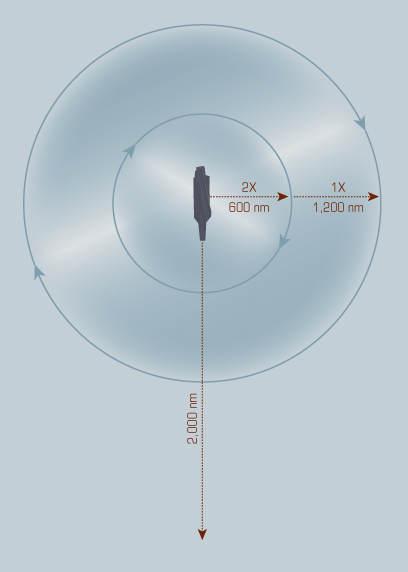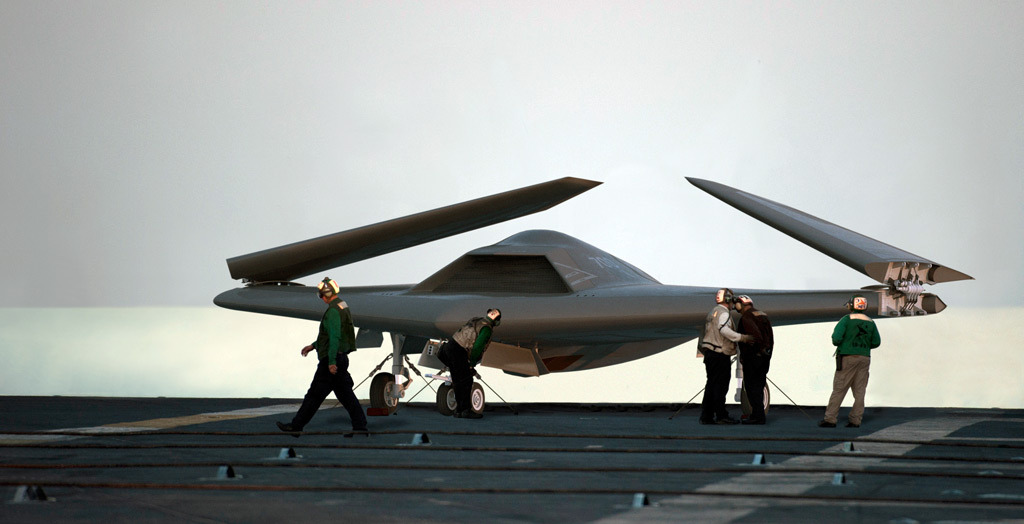
The Navy seems to have shifted its concept for the Unmanned Carrier Launched Surveillance and Strike (UCLASS) for a third time in as many years part of the most confusing and misunderstood aviation acquisition programs in the last decade.
At its 2006 conception, the new generation of carrier based unmanned aerial vehicles would be built to extend the inland reach of carrier strike groups a well beyond the reach of the current crop of manned fighters.
In 2011, the Navy and the Pentagon moved to make a lower cost UAV to be quickly pushed into service to hunt terrorists, anticipating a world where U.S. forces could be restricted in flying land-based UAVs as well as act as an intelligence, surveillance and reconnaissance (ISR) asset when the rest of the carrier air wing was off-duty.
Now, the Navy seems to have again changed the character of the planned UCLASS into an aircraft that will almost exclusively spend its time over the ocean.
“It’s very much part of our maritime package, as part of the carrier strike group,” said Vice Adm. Paul Grosklags, principle military deputy to the assistant secretary of the Navy for research development and acquisition, who spoke to USNI News on Thursday.

Thomas P. Ehrhard and Robert O. Work
The new concept is completely different from what the original progenitors of the program — including current deputy defense secretary Bob Work — had intended, but seems to fit inline with the Navy’s current thinking about maritime threats in the Western Pacific.
The missions now in mind for UCLASS now include permissive airspace ISR and strike initially to start with, Grosklags said. As the program evolves, those missions would expand to more challenging contested littoral and coastal ISR and strike, to attacking an enemy surface action groups (SAG).
The requirements for the UCLASS have been set and that the Pentagon had expected to hold a Defense Acquisitions Board (DAB) meeting next Monday, Grosklags testified before the House Armed Services Subcommittee on Seapower and Projection Forces on Wednesday.
However, Work has requested a “precursor” meeting ahead of the DAB, which forced the Pentagon to postpone.
Both the meeting with Work and the DAB are now expected next week before the final request for proposals (RFP) is released to the four companies competing: Boeing, Lockheed Martin, General Atomics and Northrop Grumman. The RFP is restricted even though the most of the document is unclassified.
“We don’t want to compromise the safety of the public,” said Naval Air Systems Command spokeswoman Jamie Cosgrove in an Thursday emailed statement to USNI News.
“The security classification guide was signed off by Navy leadership.”
Cosgrove did not specify which element of Navy leadership approved the classification.
In his testimony, Grosklags said the top-level requirements as set forth in a UCLASS capabilities development document — signed in April 2013 by chief of naval operations Adm. Jonathan Greenert — has been stable for more than a year.
Further, the Joint Requirements Oversight Council (JROC) has looked at the UCLASS requirements over six times— with Feb. 4 being the most recent, U.S. Air Force Brig. Gen. Joseph Guastella, deputy director of requirements at the joint staff, told the panel.
As currently envisioned, the UCLASS will initially be designed to operate in permissive to moderately contested airspace to provide ISR and a light strike capability to the carrier air wing, Grosklags said.

In that initial early operational capability configuration, the aircraft would be able to provide either two ISR orbits at 600 nautical miles from the carrier or one orbit 1,200 nautical miles from the ship. It would also be able to carry a single internal 1000 pound Laser Joint Direct Attack Munition (LJDAM) on a 2,000 nautical mile strike mission.
While initial versions of the UCLASS would have an endurance of 14 hours, that could diminish as the aircraft is upgraded to perform different types of missions. “14 hours of endurance is for the specific early operational capability mission—ISRT with limited precision strike capability,” Grosklags said.
“Once we expand into other mission roles with potentially more weapons or potentially more stuff on the aircraft, whether those be weapons, jamming pods, additional sensor pods — you name it—that 14 hours endurance requirement will no longer be in effect in those mission configurations.”
Nonetheless, Grosklags said, some of the designs might still be able to meet the 14-hour endurance requirement even while carrying external stores, but the contractors will not be held to that endurance figure.
The 14-hour endurance requirement was driven by life-cycle costs, according to the testimony of Mark Andress, assistant deputy chief of naval operations for intelligence.

Designing the UCLASS to have an eight-hour endurance, optimizing it for strike and aerial refueling would leave the Navy with an operations and maintenance bill some four time higher than an aircraft with 14-hours of endurance.
UCLASS is being designed for growth, but the internal weapons payload requirement is set at 1000 pounds.
The aircraft will eventually be able to carry weapons and other stores on external hardpoints. The Navy’s only firm requirements for those hardpoints is that they be compatible with the service’s arsenal of weapons.
“The requirement for internal carriage is about a 1000 [pounds],” Grosklags said. “There are requirements for two external 3000 pound hardpoints.”
In terms of survivability, while the Navy will require the UCLASS to be able to increase its stealth capabilities over time, the aircraft may not rely on low-observables.
In keeping with the Navy’s doctrine, it could also use electronic attack capabilities during high-end combat operations. “It could be a combination of both,” Grosklags said.
Grosklags could not comment on what frequency bands the UCLASS stealth features would be optimized for due to classification reasons. However, if the aircraft were not configured as a flying wing, it would necessarily need to be optimized for the high-frequency bands as a simple matter of physics.

The UCLASS will not be designed to go it alone inside hostile airspace. Instead, it will be designed to work with other carrier air wing assets like the Lockheed Martin F-35C, Boeing F/A-18E/F and EA-18G Growler under the Naval Integrated Fire Control-Counter Air (NIFC-CA) construct.
“The whole [concept of operations] for this aircraft is that it will operate as part of the carrier strike group, it may also be tasked by the combatant commander… for other missions,” Grosklags said.
“It is not designed to operate lone and unafraid particularly in a hostile environment.”
One of the problems of operating in a highly contested environment is that the enemy will jam the communication between the unmanned aircraft and those who are controlling it. The Navy believes it has a handle on that problem—but cannot discuss the specifics.
“We have taken into account operations into the current threat environment in terms of jamming or loss of communications,” Grosklags said. “We’ve not only looked at the current environment but we’ve also looked at what we expect to see in the future environment.”
The Navy plans to field UCLASS by 2020.




